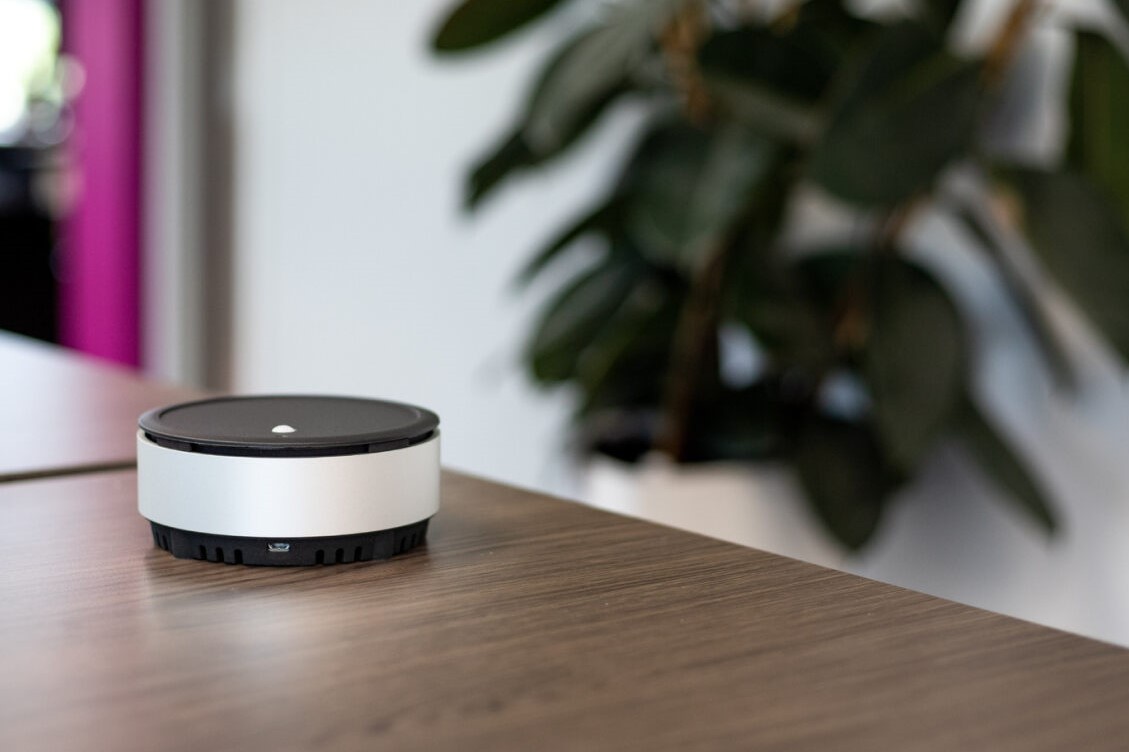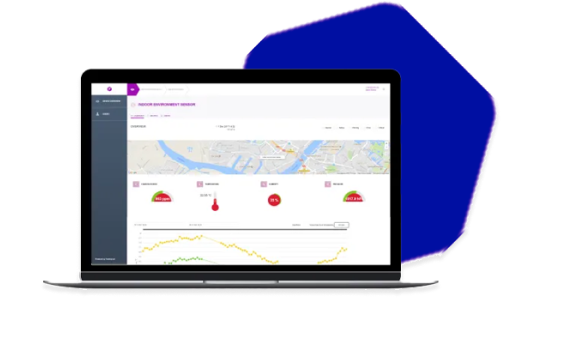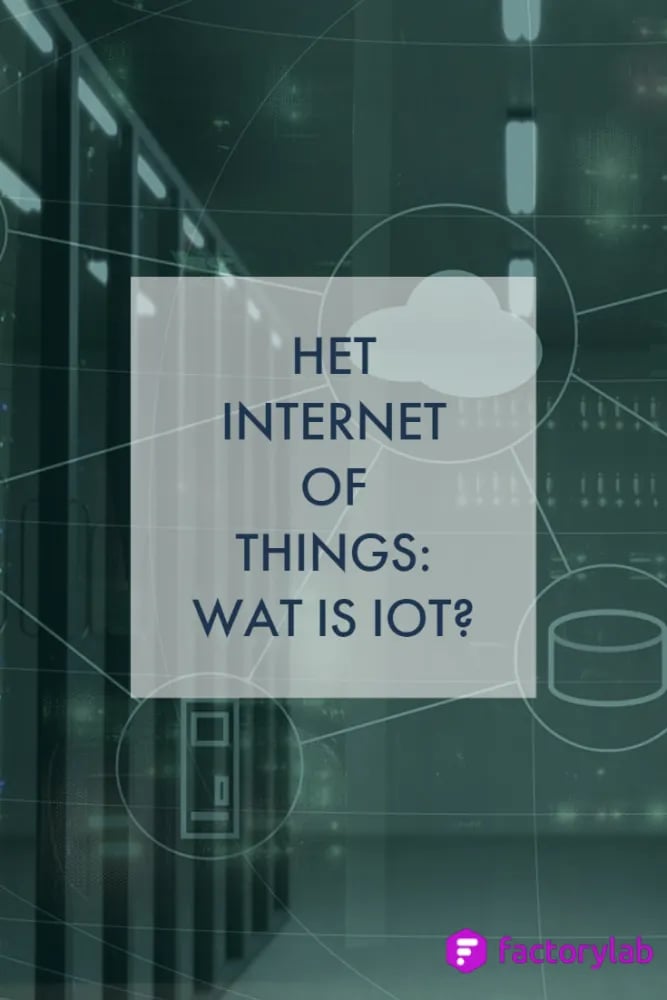The Internet of Things: What is IoT?
Table of contents
The Internet of Things or popularly known as IoT. What exactly is it?
In two blogs, we answer that question. In this first blog, we explain: what IoT is, how IoT came to be and how the Internet of Things works. In the next blog, we discuss: why IoT is important, what it is used for and how the Internet of Things is evolving.
We know what we are talking about. As a developer and supplier of IoT devices, we move into the Internet of Things every day. Indeed, we connect thousands of our devices to it.
Read on, then you too will soon know what you are talking about.
Definition: What is IoT?
The Internet of Things is best described as the set of physical objects connected to the internet. By physical objects, in this case, we mean everyday devices and utensils. These can be, for example, household, mobile or industrial devices.
These devices are equipped with sensors, software and other technologies, with the aim of exchanging data with other devices, systems and people via the internet. These types of devices are also called smart devices.
You probably already use IoT more often than you think. For example, do you measure the number of steps per day with your smartwatch? Do you regulate and control the temperature in your home with a smart thermostat? Do you play music at home via Spotify? Do you ask Google Home or Alexa to turn on the lights when you get home?
Yes? These are all examples of using IoT.
History
The term Internet of Things was first used in 1999 by Kevin Ashton. Funnily enough, however, the principle was first applied in the early 1980s.
It all started with a soda machine at the US university Carnegie Mellon University. The beverage vending machine here was too far from the Computer Science faculty. At least, that's what a group of students thought. Too often they found the vending machine empty or just refilled (and thus with lukewarm cans) after walking all the way. A group of students came up with a solution to remotely monitor the stock and temperature of cola bottles in the vending machine. They added some hardware to the machine, wrote software and connected the machine to a precursor of the internet called ARPANET. Now they knew exactly how many cold bottles of cola were in the vending machine. And this just from their computer.
It wasn't until 1999 that Kevin Ashton launched the term Internet of Things during a presentation at Proctor & Gamble. Due to problems understanding the stock of a particular lipstick that Proctor & Gamble sold, Ashton wanted to equip the lipsticks with an RFID (radio-frequency identification) chip. This way, he wanted to be able to track the lipsticks from production to the shop shelf. [1]
The word Internet was still a mesmerising buzzword back then, a bit like AI (artificial intelligence) or machine learning now. Ashton knew this. To get the board's full attention to his plan, he decided to creatively incorporate the word Internet into the title of his presentation. Thus, the term Internet of Things was born. [2]
In the years around 2010, the Internet of Things itself became a powerful buzzword, and to some extent it still is. Companies became increasingly enthusiastic about the possibilities of IoT. During the same period, more things than people were connected to the internet for the first time.
While initially business and industry saw opportunities in IoT, the growth in the number of connected devices only really accelerated in recent years with the arrival of smart devices in our homes. Consciously or unconsciously, IoT is now part of our daily lives.
How does IoT work?
You now know what IoT means and how it came about. But how exactly does it work? How are devices connected to the internet and to each other? What enables them to exchange information between people, systems and devices?The ecosystem that enables the Internet of Things is formed by 4 steps:
- Collecting data
- Sending data
- Processing data
- Using data
To enable these steps, 4 key components in the ecosystem are indispensable:
- Sensors/Devices
- Connectivity
- Cloud Infrastructure
- User-Interface
We will explain these components 1 by 1. The text will continue after the image.
Sensors/Devises
The first step that needs to be taken in the ecosystem of the Internet of Things is to collect data. Smart devices collect information from their immediate environment and about the operation of the device itself. To collect this information, a sensor is used and, in most cases, multiple sensors. A smart device then contains several types of sensors for collecting different types of data.
A smart device can be a tool made specifically for collecting data, but it can also be an everyday device that has many more functions. For example, a smart phone contains many different sensors, but it is really more than just a sensor.
In addition to sensors, smart devices contain a microcontroller, a modem and a piece of local software (embedded software) that control the device and connect it to the internet. In fact, you could think of smart devices as mini-computers that are connected to the internet.
But what do we mean by gathering information from their environment? This calls for an example:
Factorylab's Smart Office is a device that monitors the health and comfort of a workplace. The device is equipped with 5 different sensors. These sensors collect data from the device's environment. In other words, they measure in the room where the Smart Office is located:
- CO2 content
- Humidity
- Temperature
- Volume
- Luminosity
(Text continues below the image.)

Sensors are therefore crucial for the Internet of Things. Sensors bring devices to life.
Connectivity
The next important step in the ecosystem is the sending of data. To send data, you need a tool. This agent is an important component of the ecosystem. This means is connectivity.
Connectivity is a general term used for connecting devices to each other and the internet in order to exchange data. Connectivity is therefore what makes it possible for different IT systems to communicate with each other electronically.
Smart devices are used for a variety of applications and under different conditions. Smart devices therefore have different requirements for connectivity.
The requirements that determine the choice of the type of connectivity mainly relate to the following factors:
- Range – Bridgeable distance.
- Bandwidth
- Energy consumption
- Data security
- Cost
The different requirements for connectivity have resulted in a wide and growing range. A large number of different network protocols and standards have made their entrance into the IoT market in recent years.
In general, we can divide the different technologies into 2 categories: wired and wireless.
The need to communicate wirelessly is implicit in the idea of the Internet of Things. Innovations in the field of wireless communication are therefore taking place continuously. Yet, there are still wired technologies that are widely used.
Key examples of wired connectivity:
- Ethernet
- USB
- HDMI
Wireless connectivity can be divided into 3 groups with some examples:
- Cell phone
- 4G
- 5G
- WPAN/WLAN (Wireless Personal Area Network/Wireless Local Area Network)
- WiFi
- BLE
- RFID
- Zigbee
- NFC
- LPWAN (Low Power Wide Area Networks))
- LoRaWAN
- SigFox
- NB-IoT
- LTE-M
Wireless connectivity is made possible by an additional piece of hardware: a gateway (or router). The sensors and devices are connected to the gateway. The gateway then forwards all the collected data. Gateways can be part of a nationwide network provided by a network provider or a user's local network.
Based on the factors mentioned earlier, the end user chooses the technology that best suits his or her use case.
At Factorylab, we choose LoRaWAN in most cases. This is because the following factors apply to many of our customers, products and developments:
- Long-distance communication is important (range)
- Continuous data traffic is not necessary (bandwidth)
- Low energy consumption and long battery life is desirable (energy consumption)
- Low cost
In a future blog we will take a closer look at LoRa/LoRaWAN.
Connectivity is therefore the connecting factor for all elements in an IoT ecosystem. Elements such as devices, sensors, routers, gateways, applications and platforms. Connectivity makes it possible to maintain control over the entire system.
Cloud infrastructure
The third important step in the ecosystem is the processing of data. The data collected by sensors and devices is sent by means of connectivity to locations where the data is processed. These locations are usually IoT platforms that run on large server farms (data centres) worldwide. This collection of servers worldwide is called the cloud.
A cloud is intangible by nature. Data (sometimes also related data) is spread over multiple servers worldwide. Data owners often don't know exactly where the data is located. The widespread data locations make it somewhat intangible and diffuse (cloudy). However, the data is definitely stored on a remote server, to which a connection is made. So beyond the term and the perception, the cloud is indeed tangible and physical.
Simply explained, an IoT platform consists of: advanced software and large databases on cloud servers. The IoT platform receives the data, processes it and stores it. By means of software, the data is analysed and the desired data is selected. An analysis and selection based on the purpose of the device. Or rather: analysed and filtered for information desired by the user. Based on this selected data, patterns and problems can be recognized and recommendations can be made.
Well-known IoT platforms are:
- Google Cloud IoT
- Cisco IoT Cloud Connect
- Salesforce IoT Cloud
- IBM Watson IoT
- Amazon AWS IoT Core
- Microsoft Azure IoT Hub
- Oracle IoT
- Particle
- IRI Voracity
At Factorylab, part of the processes take place in the cloud on a self-developed platform (device management, processing) and part on Amazon AWS (storage & processing).
In another blog, we will take a closer look at the IoT Platforms and the Factory Online Platform.
User-Interface
The fourth and final important step in the ecosystem is the use of data. Now that the collected data has been processed and stored, decisions can be made based on the processed data. This is where the end user comes in.
By means of a user interface (or end-user device) the information is made available to the end user. This user interface can be, for example, an online portal in a web environment or a mobile app. Here you can view the data. The end-user can then act on the insights offered to him or her.
In addition to the fact that the data can be used by the user, a command or new data can also be sent to a device based on the analysed data. This can be to the device that collected the data or to another device. This device can then perform intelligent actions even without human intervention. Something that makes a smart device actually smart.
Here's an example:
You may have a smart thermostat at home. On the display you can see the temperature in your home, view an analysis of your monthly consumption or make desired settings. In this case, the thermostat is the user interface. The smart device shows you the collected and processed data. As a user, you can decide to reduce your consumption, you can give the command to turn the heater up or down, or based on programmed rules, your thermostat controls the ventilation at a certain temperature.
Another example of a user interface is Factorylab's Online Portal. By logging in via a web page, the user gains insight into data collected by various sensors. Such as, for example, the data from CO2 meters in office spaces or classrooms. Users can make decisions based on graphs that are presented to them in a dashboard or be alerted by e-mail if values are critical. (Text continues below the image.)

So: What is IoT?
In this blog, we explained what the Internet of Things actually is, how it came to be and how IoT works.
The most important take-aways at a glance:
- The Internet of Things is the set of everyday devices and utensils that are connected to the internet, with the aim of exchanging data with other devices, systems and people.
- The term Internet of Things was coined in 1999, but was already used as a technology in the early 80s.
- The IoT ecosystem has four main processes
- Collecting data
- Sending data
- Processing data
- Using data
- The four key components of the IoT Ecosystem are:
- Sensors/Devices
- Connectivity
- Cloud infrastructure
- User-Interface
A lot is written and spoken about IoT. The Internet of Things is playing an increasingly important role in our lives. Our everyday objects at home and at work are rapidly becoming smart devices.
You already know much better what you're talking about. Also read our next blog to find out: why IoT is important, what it is used for and how it is evolving.
Are you curious about Factorylab's smart devices and sensors? Do you want to turn a device into a smart device?
Please contact us here.
[1] The little-known story of the first IoT device - Industrious (ibm.com)
[2] Kevin Ashton Describes "the Internet of Things" | Innovation| Smithsonian Magazine

